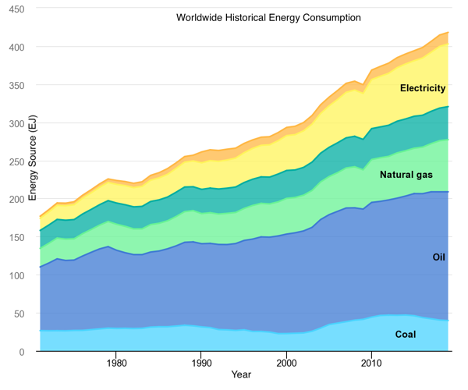Technology is an inevitable, integrated part of our lives. We use (live and sleep with) technology on an everyday basis. For example, over 90% of our time is spent indoors inside buildings and cars that are equipped with technology [2]. One simple device such as a smart thermostat in homes can generate over a million data points in less than a month if sampled at 1 minute per sec. We spend the majority of our time either on a smart device or in close proximity to a smart device. With smartphone penetration of 67% globally [4] and users checking their phone every 10-20 minutes on average throughout the day, it is expected that people will be near a smart tech device (smart phones, laptops, smart watches, etc.) for most of their life. Technology is considered in a broad sense here as it includes hardware, algorithms, platforms, controls, communication mechanisms, sensors, software, artificial intelligence, and machine learning.
Technology also plays a critical role for companies in multiple industries ranging from electronics to manufacturing to IT. It can offer numerous advantages to businesses, from solving customer needs to optimizing internal processes and providing competitive advantage both in short and long terms. Therefore, some companies have large, dedicated technology departments and technology investments that cut across multiple business units and products. With so many advantages and wide-spread adoption and acceleration of technology worldwide, one question arises:
Can any benefits gained by technology be negated?
Let’s take a concrete example as there is no straight forward answer to this question. In the past 50 years, the world has made significant technology improvements that led to more energy-efficient buildings, homes, and systems, which are one of the top energy consumers worldwide. These advancements include building management systems, building automation systems, sensors to turn on/off your devices, tighter building envelope to reduce wastage, higher quality insulated materials, LED lighting, higher-efficiency equipment and distribution systems, and so on. Given the list of efficiency improvements, one may expect the total energy consumption growth to decrease over time [2]. However, this is counter intuitive and NOT the case. The energy consumption worldwide has grown 2.4 times – from 176 EJ in 1971 to 418 EJ in 2019 [3] – over the past 50 years despite the population growth having only doubled (3.8 billion in 1973 to 7.9 billion in 2019) during that time. Surprising!

Figure 1: Worldwide historical energy consumption from 1971-2019 [3]
In fact, a similar phenomenon was described by William Stanley Jevons [1, Chapter 7] in mid 1800 [XX Chapter 7], when there was a sudden rise in coal consumption after the people started using the James Watt Steam Engine, an efficient version of coal-fired steam engine. In this case, when the engine efficiency improves, less coal is needed to deliver the same amount of energy. Therefore, the overall cost is reduced. Reduction in total overall cost increased the total demand of energy and thus the higher consumption of coal. Relative rise in demand will depend on many factors such as price elasticity, improvement in efficiency gains, scarcity of resources, etc. This phenomenon is commonly called the “Jevons Paradox”, which essentially states that improving the efficiency of a resource may increase the overall consumption of the resource in the long run.
Suppose we knew that designing a better steam engine yields higher coal consumption in total, would we ever develop a steam engine knowing that coal is a nonrenewable resource, which will deplete faster. Similarly, would we develop new energy-efficient technologies in buildings if we know that it may increase the overall energy consumption worldwide. The answer lies in the perspectives and the scope of the problem, i.e., who is affected by the advancement and what is the impact of this advancement. With the energy-efficiency advancement: a) More people and industries are able to access the energy they did not have before, 2) More energy can be generated to power up larger use cases. Imagine the list of opportunities that societies can unlock with more energy in the hands of more people. More importantly, we are heading in the direction of perhaps a more equitable society from an energy point of view: “Energy for Everyone”.
A similar scenario in a different industry is related to computer chips where improving the computational efficiency of chips does not necessarily reduce the overall computational power consumption worldwide; unlocking business cases using AI/Machine learning powered from large computation indicates the same trajectory. This is a very practical concept and can be applicable to numerous situations and use cases in other domains and industries, e.g., HR people management, oil refinery process, data management, supply chain 4.0, online payment systems, and airline flights.
A question to reflect is what “original” goals are truly achieved by the technology and what “other” gains are negated by using the technology? Understanding the holistic situation may provide us a clear picture on not only how to set up the right original goals but also evaluate the associated tradeoffs to create a win-win situation for all.
References
1. Jevons, W. S. (1906). The Coal Question: An Inquiry Concerning the Progress of the Nation, and the Probable Exhaustion of Our Coal-mines. United Kingdom: Macmillan.
2. Goyal, S. (2021). Advanced Controls for Intelligent Buildings: A Holistic Approach for Successful Businesses. United States: CRC Press.
3. IEA. (2021). Supply – Key World Energy Statistics 2021 – analysis. Retrieved January 23, 2023, from https://www.iea.org/reports/key-world-energy-statistics-2021/supply
4. Laricchia, F. (2023, January 17). Global smartphone penetration 2016-2021. Statista. Retrieved January 23, 2023, from https://www.statista.com/statistics/203734/global-smartphone-penetration-per-capita-since-2005.
/* this article is NOT generated via any Artificial Intelligence (AI) or Machine Learning (ML) tool*/